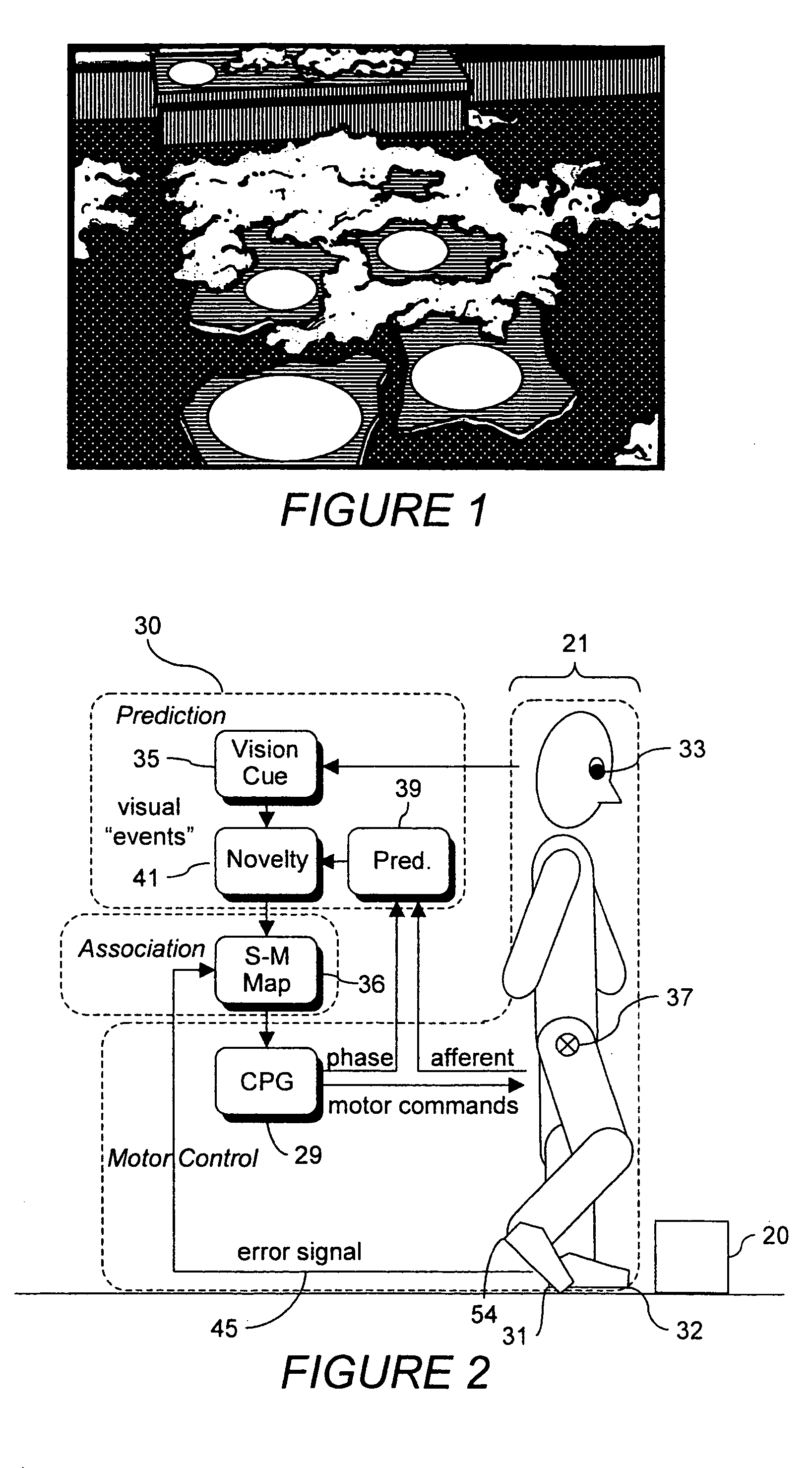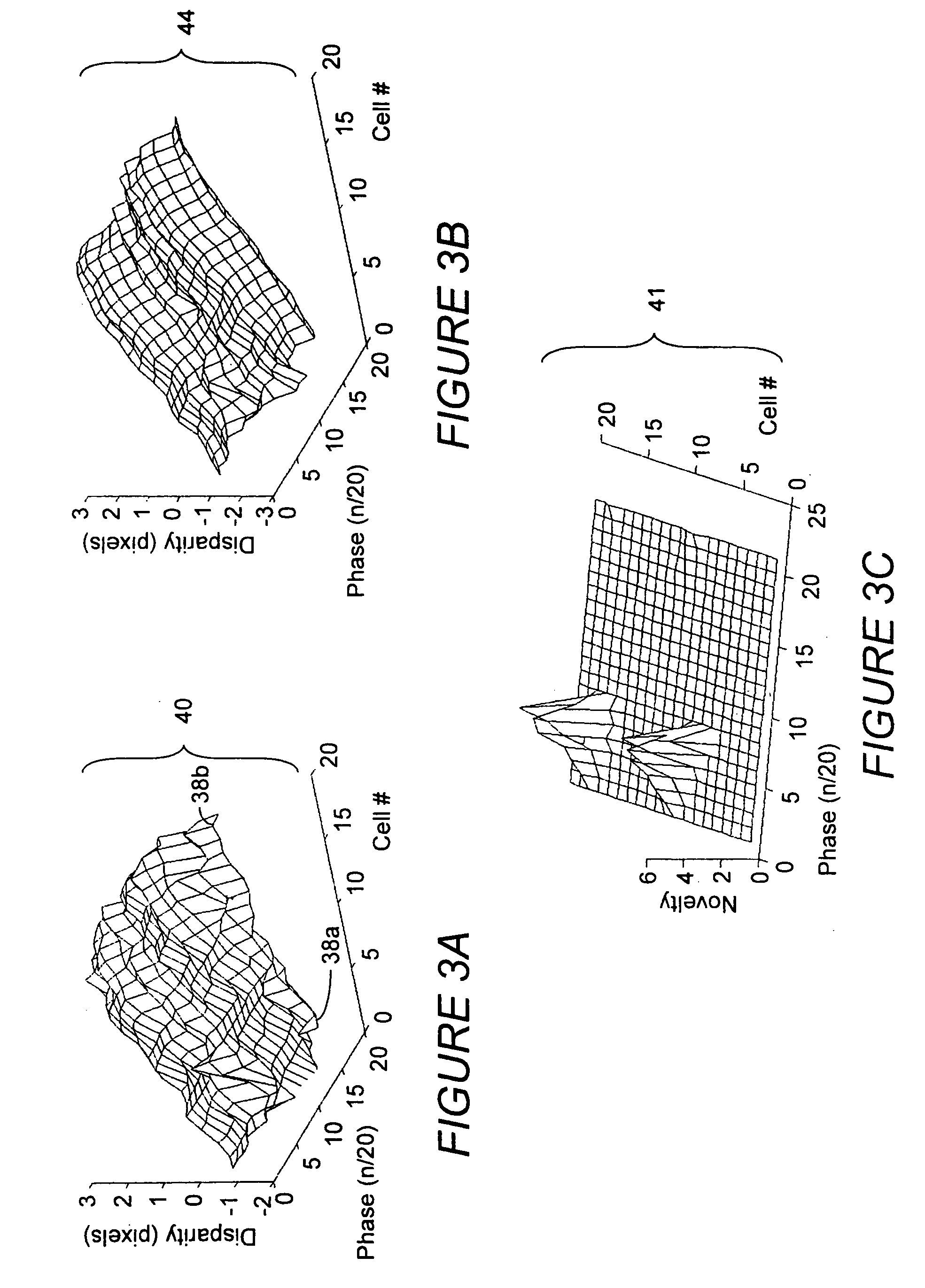Certain principles of biomorphic robots including foot placement selection using non-geometric visual properties
a biomorphic robot and foot placement technology, applied in the direction of distance measurement, programme control, instruments, etc., can solve the problems of poor affordance process, insufficient advanced locomotion, and general mobility needs of robots using wheels and/or tracks
- Summary
- Abstract
- Description
- Claims
- Application Information
AI Technical Summary
Benefits of technology
Problems solved by technology
Method used
Image
Examples
Embodiment Construction
[0039]Referring now to the drawings and more particularly to FIG. 2, a schematic view of the an exemplary mobile robotic biped 21 or “robot” having at least active hip joints 37 and “feet”54 shown in relation to an exemplary obstacle 20. FIG. 2 visually demonstrates an algorithm in accordance with the invention that has been successfully employed in a robot 21. The algorithm is developed to model the same learning process and method that biological systems are believed to use for successful mobility. The algorithm consists of an autonomous system such as a Central Pattern Generator 29 (e.g. a distributed system of non-linear limit cycle oscillators that generate the necessary pattern of control signals for limb movement), a pseudo-cerebellum 30 that is responsible for predicting sensory perception 39 and novel events 41 after receiving vision cues 35 from at least one distal sensor (e.g. a camera, multiple cameras, laser rangefinder, etc.) 33, and a system of “reflexes”31, 32 that i...
PUM
 Login to View More
Login to View More Abstract
Description
Claims
Application Information
 Login to View More
Login to View More - R&D
- Intellectual Property
- Life Sciences
- Materials
- Tech Scout
- Unparalleled Data Quality
- Higher Quality Content
- 60% Fewer Hallucinations
Browse by: Latest US Patents, China's latest patents, Technical Efficacy Thesaurus, Application Domain, Technology Topic, Popular Technical Reports.
© 2025 PatSnap. All rights reserved.Legal|Privacy policy|Modern Slavery Act Transparency Statement|Sitemap|About US| Contact US: help@patsnap.com



